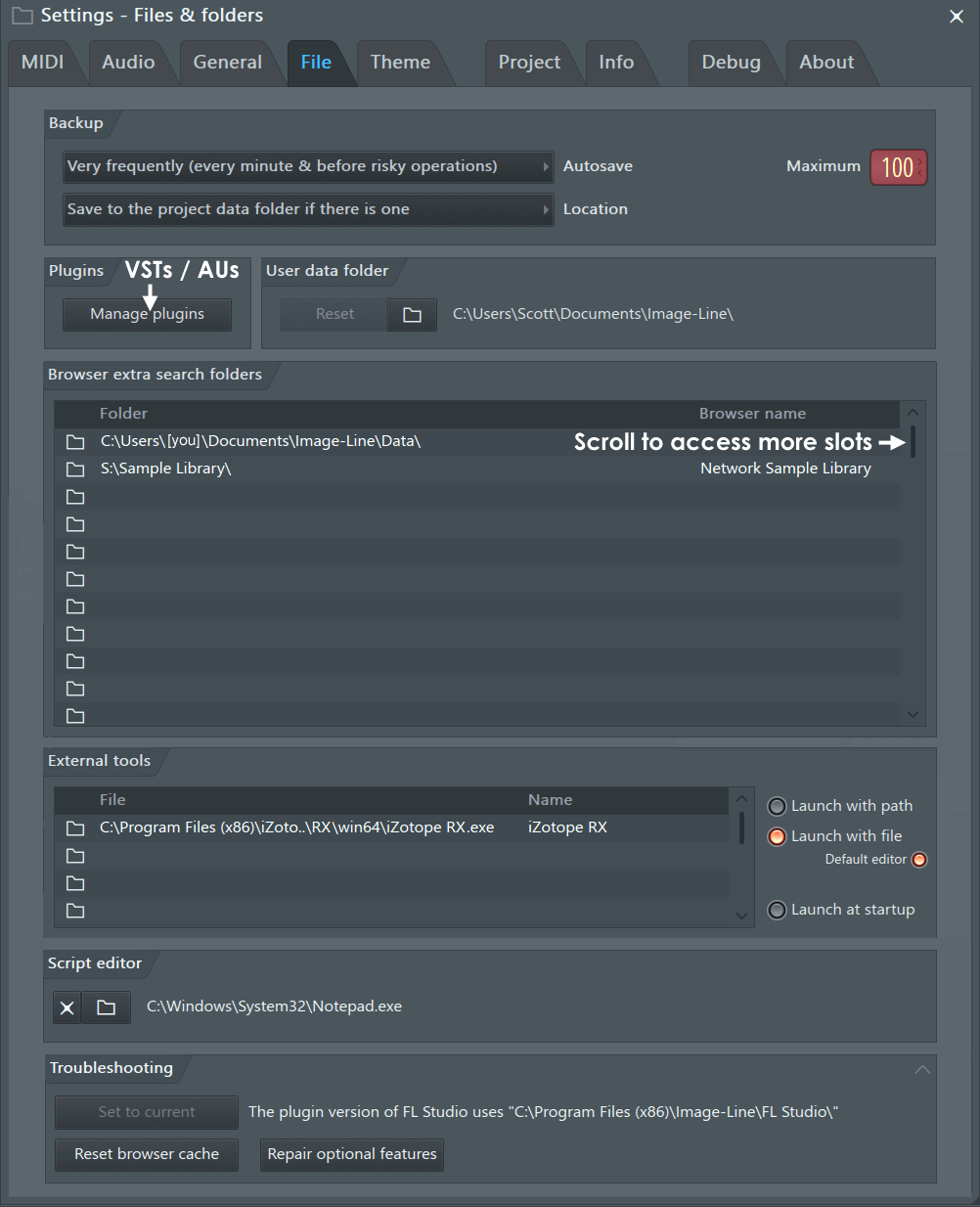You can install Audio Units plug-ins from manufacturers other than Apple to process audio in Logic Pro, GarageBand, and Final Cut Pro. When installed, Audio Units plug-ins appear as individual components in the Library folders on your Mac:
- In the Finder choose Go > Go to Folder, enter '/Library/Audio/Plug-Ins/Components' into the Go to Folder field, then click Go.
- You can also check the Library in your Home folder. In the Finder choose Go > Go to Folder, enter '~/Library/Audio/Plug-Ins/Components' into the Go to Folder field, then click Go.
FL Studio 20 represents today's most sought-after tools in Audio production today. Take full control of your creativity today with powerful and easy to use multi-track audio recording, MIDI piano roll editing, and over 80 plugins effects and virtual instruments today.
Built-in effects and instruments included with Apple apps like Logic Pro, GarageBand, MainStage, and Final Cut Pro don't appear in the Library folders and can't be removed manually.
Learn more
ProgramData is normally a hidden file. To 'Show Hidden Files' go to Start Menu/Control Pane/Appearance And Personalization/Folder Options/View tab. Select the 'Show Hidden Files and Folders' option and hit 'Apply'
On Windows XP, the Spectrasonics folder is located here:
C:Documents And SettingsAll UsersApplication DataSpectrasonics
Documents And Settings is normally a hidden file. To 'Show Hidden Files' go to Start Menu/Control Options/Folder Options//View tab. Select the 'Show Hidden Files and Folders' option and hit 'Apply'
The data files for Omnisphere are stored in your STEAM folder. When you update your patches or soundsources, you are updating files in your STEAM folder, which was created when you originally installed Omnisphere. Your STEAM folder is located inside your Spectrasonics folder. See the instructions below to find your Spectrasonics folder. Inside your Spectrasonics folder you'll find STEAM, which may be the STEAM folder, or it may be an alias (Mac) or Shortcut (Window) to the STEAM folder.
On Mac, the Spectrasonics folder is located here:
Macintosh HD/Users/<Your Username>/Library/Application Support/Spectrasonics
From Mac OS X 10.7 and higher, Apple have made the User - Library folder a hidden folder by default. This is to stop general Mac users fiddling with settings, however, music makers will require using this folder from time to time.
Please see the handy article below on how to unhide your User Library folder in Mac OS X 10.7 or higher
On Windows Vista and Windows 7, the Spectrasonics folder is located here:
C:ProgramDataSpectrasonics

ProgramData is normally a hidden file. To 'Show Hidden Files' go to Start Menu/Control Pane/Appearance And Personalization/Folder Options/View tab. Select the 'Show Hidden Files and Folders' option and hit 'Apply'
On Windows XP, the Spectrasonics folder is located here:
C:Documents And SettingsAll UsersApplication DataSpectrasonics
Documents And Settings is normally a hidden file. To 'Show Hidden Files' go to Start Menu/Control Options/Folder Options//View tab. Select the 'Show Hidden Files and Folders' option and hit 'Apply'
Storing sound files on a secondary drive
If you are wanting to store your Omnisphere audio files on a second hard drive, you can put the Spectrasonics/STEAM folder onto your second drive. You will then need to create an alias or 'short cut' to this location on your main Mac or Windows drive. You can create an alias (Mac) or a short cut (Windows) by right-clicking (ctrl+click for Mac users) the STEAM folder and selecting it from the menu.
Once you have done this, you will then need to either locate or create the following folder on your main drive:
On Mac, the Spectrasonics folder needs to be created here:
Macintosh HD/Users/<Your Username>/Library/Application Support/Spectrasonics
On Windows Vista and Windows 7, the Spectrasonics folder needs to be located here:
Where To Find Fl Studio Directory Machine
C:ProgramDataSpectrasonics
On Windows XP, the Spectrasonics folder needs to be created here:
C:Documents And SettingsAll UsersApplication DataSpectrasonics
Where To Find Fl Studio Directory Macbook Pro
You will then need to move the STEAM alias folder (or the STEAM short cut folder) into the Spectrasonics folder on your main drive.
Fl Studio 12 For Mac
Note: On Mac, once you have placed the 'STEAM alias' folder on your main drive, you will need to rename it removing the word alias from the file, otherwise it will not work. You should now have a 'STEAM' folder on your main drive that is pointing to its actual location on your second drive.
Now when you close and re-launch your host application, Omnisphere should be pulling the audio files from off of the second hard drive.